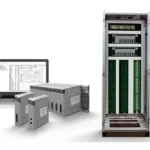Efficiency and precision are paramount in the dynamic world of construction and infrastructure development. An electrical system is a crucial aspect of any project, be it a commercial building, industrial facility, or residential complex. The design and installation of electrical systems are pivotal to a project’s overall success, and this is where Design and building electrical comes into play.
Understanding Design and Build Electrical
Design and Build Electrical is a comprehensive approach to project management and execution that encompasses the entire lifecycle of an electrical system. It’s a methodology that integrates the design and construction phases, ensuring a seamless and efficient process. This approach contrasts with the traditional method of separating design and construction, where the project owner contracts with separate entities for each phase.
In the traditional approach, the owner first hires an architect or engineer to design the electrical system. After the design, the project is put out for bid, and a construction contractor is selected. This sequential process can lead to potential issues such as miscommunication, delays, and increased costs.
In contrast, Design and Build Electrical brings the design and construction teams together from the outset. This collaborative approach fosters communication, streamlines decision-making, and optimizes the project’s overall efficiency. Here’s a closer look at Design and Build Electrical’s key benefits and elements.
Vital Elements of Design and Build Electrical
1. Collaboration from Inception
In Design and Build Electrical, the electrical contractor is involved in the project from its conceptual stage. This early collaboration allows for valuable input and expertise to be integrated into the design, ensuring that the electrical system is functional but also cost-effective and efficient. This proactive involvement reduces the likelihood of design revisions during construction, saving time and money.
2. Cost Control
One of the most significant advantages of Electrical Design is better cost control. The design and construction teams work closely to ensure the project’s budget is known. This enables effective cost management throughout the project’s lifecycle, minimizing unexpected expenses and change orders.
3. Streamlined Communication
Failures in communication between the design and construction teams can cause delays and expensive mistakes. Design and Build Electrical eliminates these issues by fostering open and ongoing communication between all parties involved. This ensures that design intent is accurately translated into the final installation.
4. Efficient Problem Solving
In complex projects, unexpected issues are almost inevitable. However, Design and Build Electrical can address these problems swiftly and efficiently. The collaborative nature of the approach allows for on-the-spot decision-making, reducing the downtime associated with issue resolution.
5. Quality Assurance
Combining design and construction expertise, Design and Build Electrical ensures that the final electrical system meets the highest quality standards. Contractors are directly responsible for the quality of their work, which encourages them to provide a high-quality result.
6. Faster Project Delivery
Efficient communication, early problem-solving, and streamlined processes contribute to faster project delivery. Owners can have their projects completed on schedule or even ahead of time, resulting in reduced holding costs and the ability to generate revenue sooner.
Advantages of Design and Build Electrical
1. Cost Savings
The most compelling advantage of Electrical Design is the potential for cost savings. The collaborative approach minimizes design revisions, change orders, and costly delays. With a clear understanding of the project’s budget, the likelihood of exceeding it is significantly reduced.
2. Time Efficiency
Time is construction money, and Electrical Design can shave precious weeks or months off a project’s timeline. Construction can commence much sooner by eliminating the time-consuming process of putting a project out for bid and selecting contractors separately.
3. Quality Assurance
With the design and construction teams working hand in hand, the quality of the electrical system is closely monitored and maintained. This leads to a higher-quality end product that meets or exceeds industry standards.
4. Reduced Risk
In a traditional design-bid-build approach, the owner assumes more risk due to potential disputes between the designer and contractor. Design and Build Electrical shifts some of this risk to the contractor responsible for both the design and construction, leading to greater accountability.
5. Enhanced Innovation
Collaboration between designers and contractors often leads to innovative solutions and cost-effective design choices. Contractors bring practical knowledge of construction methods and materials to the design process, producing more efficient electrical systems.
Design and Build Electrical vs. Design Assist
While Design and Build Electrical is a comprehensive approach that integrates design and construction, another related concept is Design Assist. Design Assist shares similarities with Design and Build Electrical but operates differently.
Design Assist
It involves bringing contractors on board during the design phase but typically after the initial design is complete. Contractors provide input, suggestions, and recommendations to enhance the design’s constructability, value engineering, and cost-effectiveness. While Design Assist can improve the design, it only partially integrates the design and construction teams from the project’s inception, as with Electrical Design.
In essence, Design Assist is a valuable step in the right direction for projects looking to improve efficiency and collaboration. Still, it needs to catch up to the seamless integration achieved by Design and Build Electrical.
When to Choose Design and Build Electrical
Design and Build Electrical is ideal for many construction projects, particularly those with complex electrical systems or tight schedules. Here are scenarios in which Design and Build Electrical is highly advantageous:
1. Large Commercial Projects
Complex electrical systems are frequently used in office buildings, malls, and hotel construction projects. Electrical Build ensures that these systems are designed and installed efficiently.
2. Industrial Facilities
Electrical systems in manufacturing plants, warehouses, and other industrial facilities must be reliable. Electrical Design can help these projects stay on time and within budget.
3. Healthcare Facilities
Hospitals and medical centers have critical electrical needs. The streamlined approach of Electrical Design is essential to ensure these facilities are fully operational as soon as possible.
4. Data Centers
Data centers demand highly reliable electrical infrastructure. Electrical Design ensures that the electrical systems in data centers are designed and executed to meet the most stringent requirements.
5. Renovation Projects
Electrical Design is beneficial for renovation projects where existing electrical systems must be updated or expanded. The integration of design and construction teams helps minimize disruptions and downtime.
Conclusion
Design and Build Electrical is a transformative approach to electrical system projects that enhances efficiency, reduces costs, and ensures higher quality. This methodology streamlines communication, minimizes errors, and accelerates project completion by integrating design and construction teams from the start.
While Electrical Design is unsuitable for every project, its benefits are particularly pronounced in complex construction endeavors, where coordinating various trades is crucial. It’s a methodology that reflects the industry’s evolving commitment to improving project outcomes and delivering value to project owners. When considering your next construction project, remember that Electrical Design is more than just a methodology; it’s a pathway to success. Contact us for any query about any software.








